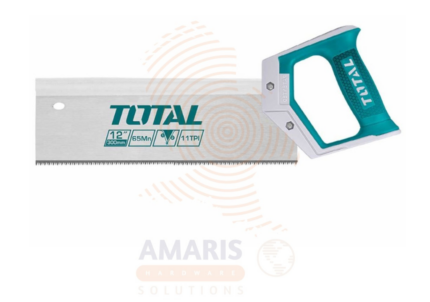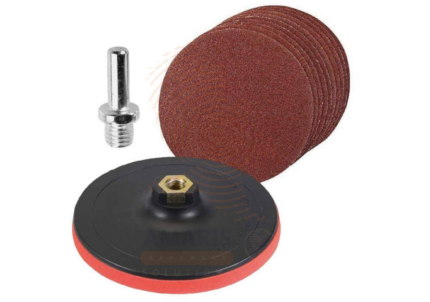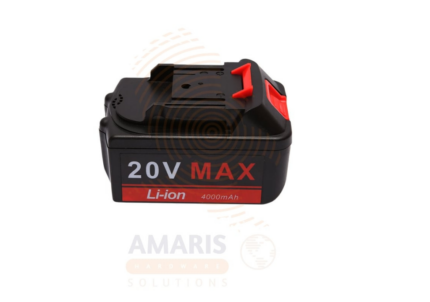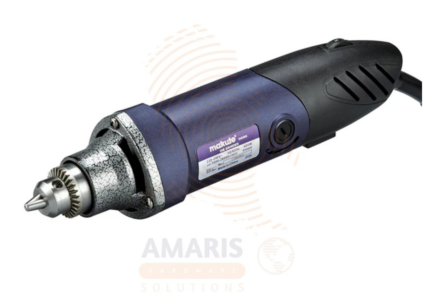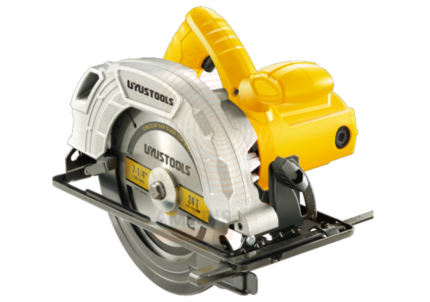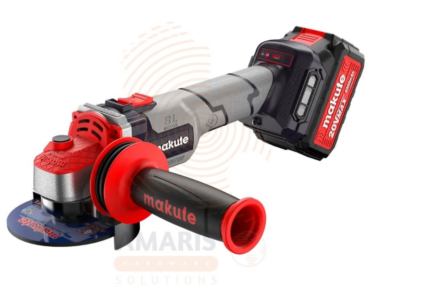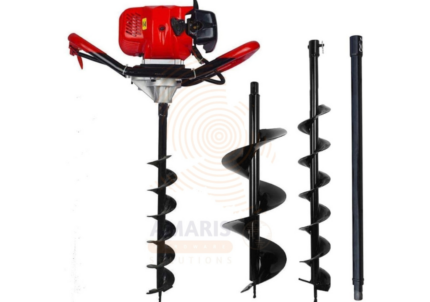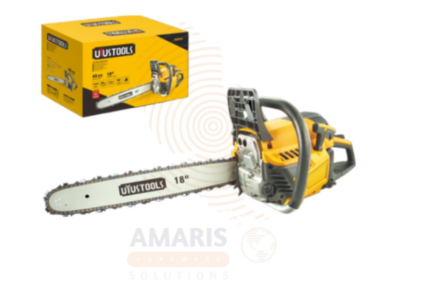Backing Pad
WhatsApp Order
A backing pad, in various contexts, refers to a device or component that provides support, cushioning, or a surface for attachment to other tools or materials. In abrasives and sanding applications, a backing pad is often a resilient and flexible surface to which abrasive discs or pads are attached. It provides a stable base for the abrasives to work effectively and may have features to dampen vibrations, enhance grip, or conform to curved surfaces. In other contexts, a backing pad could refer to a support structure for various tools or components in manufacturing or construction processes.
Description
Table of Contents
ToggleBacking Pad
Uses
-
Sanding and Polishing: In the realm of woodworking, metalworking, and auto body repair, backing pads are crucial for attaching abrasive discs or polishing pads. These pads provide the necessary support and flexibility for sanding or polishing surfaces efficiently.
-
Grinding Operations: In metalworking and fabrication, backing pads are used in conjunction with grinding discs to grind down and shape metal surfaces. The backing pad helps in achieving a smooth and controlled grinding process.
-
Buffing and Finishing: For polishing and finishing tasks, backing pads are employed with buffing pads or polishing bonnets. This is common in automotive detailing, furniture manufacturing, and other industries where a smooth and polished finish is desired.
-
Power Tools: Backing pads are integral components in various power tools such as random orbital sanders, angle grinders, and rotary polishers. They facilitate the attachment of abrasive or polishing accessories to these tools, enhancing their versatility.
-
Surface Preparation: In construction and painting applications, backing pads are used to support abrasive discs for surface preparation tasks. This includes removing paint, rust, or other coatings from surfaces before painting or coating.
-
Flexible and Contoured Surfaces: Backing pads are designed to conform to curved or irregular surfaces, making them suitable for tasks that involve shaping or finishing contoured objects.
-
Vibration Dampening: Some backing pads are engineered with features to absorb vibrations during operation, providing a smoother and more controlled sanding or grinding experience. This is particularly important for reducing operator fatigue and improving precision.
-
Versatile Tool Attachment: Backing pads often feature a hook-and-loop or adhesive attachment system, allowing quick and easy changes of abrasive discs or pads. This versatility is essential for efficiency in various tasks.
-
Adhesive Disc Applications: In industries like woodworking and carpentry, backing pads are used for attaching adhesive-backed sandpaper discs, providing a secure and reliable connection during sanding operations.
-
Material Removal: Whether it’s for deburring, leveling, or removing excess material, backing pads are instrumental in material removal processes across different industries.
SAFETY HANDLING PRECAUTIONS
Safety Precautions
-
Read and Understand User Manuals:
-
Familiarize yourself with the user manuals and guidelines provided by the tool manufacturer and the backing pad supplier. Follow the recommended procedures and safety instructions.
-
-
Personal Protective Equipment (PPE):
-
Wear appropriate personal protective equipment, including safety glasses or goggles to protect your eyes from flying debris, and hearing protection if the tool generates loud noise.
-
-
Secure Workpiece:
-
Ensure that the workpiece is securely fastened or clamped in place. This prevents movement during operation, reducing the risk of accidents.
-
-
Inspect the Backing Pad:
-
Before use, inspect the backing pad for any signs of damage, wear, or defects. Replace damaged or worn-out pads to maintain optimal performance and safety.
-
-
Choose the Right Backing Pad:
-
Select a backing pad that is suitable for the specific application and tool being used. Using the wrong type or size of backing pad can lead to inefficient operation and increased safety risks.
-
-
Secure Attachment:
-
Ensure that the abrasive disc or accessory is properly attached to the backing pad according to the manufacturer's instructions. A secure attachment prevents the accessory from becoming dislodged during operation.
-
-
Check Tool Speed:
-
Verify that the tool's operating speed matches the recommended speed for the backing pad and accessories. Operating at incorrect speeds can lead to overheating and failure.
-
-
Control Vibration:
-
Use backing pads with built-in features to dampen vibrations and reduce operator fatigue. Prolonged exposure to high levels of vibration can lead to health issues such as hand-arm vibration syndrome.
-
-
Maintain a Stable Stance:
-
Stand in a stable and balanced position while operating the tool. This helps you maintain control and reduces the risk of losing balance or being pulled towards the workpiece.
-
-
Avoid Excessive Pressure:
-
Let the tool do the work. Avoid applying excessive pressure, as it can lead to increased wear on the backing pad and accessories, and it may compromise safety.
-
-
Use Dust Extraction:
-
When applicable, use dust extraction systems or wear respiratory protection to minimize exposure to airborne dust and particulates generated during sanding or grinding operations.
-
-
Disconnect Power Source:
-
Before changing accessories or performing maintenance, disconnect the power source to prevent accidental starts. Follow lockout/tag out procedures if necessary.
-
-
Training and Supervision:
-
Ensure that operators are adequately trained in the safe use of backing pads and associated tools. Supervise less experienced users until they demonstrate competence in handling the equipment safely.
-
Related products
Bi-Metal Hole Saw Set
A 9 PCS Bi-Metal Hole Saw Set refers to a collection of nine hole saws, each constructed with a bi-metal design. A hole saw is a cylindrical cutting tool used to create holes in various materials such as wood, metal, plastic, and more. The term "bi-metal" indicates that the hole saws are made from two different types of metals, typically high-speed steel (HSS) and a more durable alloy like cobalt. This combination enhances the hole saw's cutting performance, making it suitable for a wide range of applications and providing increased durability and longevity. The set typically includes hole saws of different sizes to accommodate various hole diameters, making it a versatile tool for professionals and DIY enthusiasts alike.
Big Battery Pro
A " Big Battery Pro" typically refers to a rechargeable lithium-ion battery with a nominal voltage of 20 volts. The nominal voltage represents the average voltage output over the majority of the battery's discharge cycle. It's important to note that the actual voltage during use may fluctuate within a specified range.
These batteries are commonly used to power various devices, including power tools, garden equipment, and other portable electronic devices. The "20V" designation is a standardized measure indicating the electrical potential of the battery, providing a general indication of its power output.
Keep in mind that when considering a 20V battery, it's essential to verify compatibility with the specific device or tool it is intended for. Additionally, different manufacturers may have variations in the actual voltage, capacity, and features of their 20V battery products. Checking the product documentation or contacting the manufacturer for detailed specifications is recommended for accurate information.
Chuck Die Grinder
A Chuck Die Grinder is a handheld power tool equipped with a collet or chuck that holds a rotary burr or abrasive head. This tool is commonly used for precision grinding, polishing, and shaping of metal, wood, plastic, and other materials. Chuck Die Grinders are versatile and compact, allowing for intricate and detailed work in various applications, including metalworking, woodworking, and fabrication. They are widely employed in industries such as machining, automotive, and aerospace, as well as by hobbyists and craftsmen for tasks requiring fine control and high-speed material removal.
Circular Saw
A circular saw is a power tool equipped with a rotating circular blade, typically with teeth along its edge, designed for cutting various materials such as wood, plastic, metal, or masonry. It is commonly used in carpentry, construction, and other applications to make straight or beveled cuts with precision and efficiency. The circular saw is versatile and can be handheld or mounted on a table or other stationary surface, depending on the specific model and intended use.
Cordless Angle Grinder
A cordless angle grinder is a handheld power tool designed for cutting, grinding, and polishing materials, typically metal or masonry. Unlike traditional angle grinders that are powered by electrical cords, cordless angle grinders are equipped with rechargeable batteries, providing greater mobility and flexibility in various work environments. These tools often feature a rotating disc or wheel that can be fitted with different abrasive attachments, allowing users to perform a variety of tasks such as cutting metal, smoothing welds, or removing rust and paint. Cordless angle grinders are widely used in construction, metalworking, and fabrication applications.
Gasoline Auger Machine
A gasoline auger machine is a power tool designed for drilling holes in the ground using a rotating helical screw blade, commonly known as an auger. Unlike electric or manual augers, a gasoline auger machine is powered by a gasoline engine, providing greater mobility and independence from electrical power sources. This type of machine is commonly used in construction, landscaping, and agriculture for tasks such as digging holes for fence posts, planting trees, or installing various types of foundations. The gasoline engine provides the necessary power to turn the auger bit efficiently, making it suitable for heavy-duty and remote applications where access to electricity may be limited.
Gasoline Chain Saw
A Gasoline Chain Saw is a portable, mechanical cutting tool powered by an internal combustion engine that runs on gasoline. It typically consists of a chain with teeth attached to a guide bar, driven by the engine, and is commonly used for tasks such as tree felling, limb pruning, and wood cutting. The gasoline engine provides the necessary power to drive the chain, making the chainsaw a versatile tool for various outdoor cutting applications.
Glass Drill Set Straight Handle
PRODUCT DESCRIPTION
A Glass Drill Set with straight handle refers to a set of five drill bits specifically designed for drilling into glass surfaces. Each drill bit in the set typically has a straight handle, making it easier to grip and control during the drilling process. These drill bits are crafted with materials and designs that enhance their ability to cut through glass without causing cracks or shattering. The set may include a variety of drill bit sizes to accommodate different drilling needs and applications on glass surfaces.


 Acrylic Sealants
Acrylic Sealants Construction Adhesives
Construction Adhesives Double-Sided Tape
Double-Sided Tape Duct Tape
Duct Tape Electrical Tape
Electrical Tape Epoxy & Resins
Epoxy & Resins Masking Tape
Masking Tape
 Automotive Wrenches & Socket Sets
Automotive Wrenches & Socket Sets Battery Chargers & Jump Starters
Battery Chargers & Jump Starters Car Jacks & Stands
Car Jacks & Stands Car Wash & Detailing Products
Car Wash & Detailing Products Diagnostic Tools
Diagnostic Tools Tire Inflators
Tire Inflators Vehicle Lighting
Vehicle Lighting Oil & Lubricants
Oil & Lubricants
 Adhesives & Sealants
Adhesives & Sealants Bricks & Blocks
Bricks & Blocks Cement & Concrete
Cement & Concrete Drywall & Plaster
Drywall & Plaster Flooring (Tiles, Wood, Laminate)
Flooring (Tiles, Wood, Laminate) Lumber & Plywood
Lumber & Plywood Paints, Primers & Coatings
Paints, Primers & Coatings Insulation Materials
Insulation Materials Roofing Materials
Roofing Materials
 Circuit Breakers
Circuit Breakers Electrical Cables & Wires
Electrical Cables & Wires Switches & Sockets
Switches & Sockets Fuses & Relays
Fuses & Relays Connectors & Terminals
Connectors & Terminals Electrical Boxes & Panels
Electrical Boxes & Panels Conduit & Fittings
Conduit & Fittings Lighting Fixtures & Bulbs
Lighting Fixtures & Bulbs Extension Cords & Power Strips
Extension Cords & Power Strips
 Anchors
Anchors Bolts
Bolts Clips & Clamps
Clips & Clamps Screws
Screws Nuts
Nuts Washers
Washers Rivets
Rivets Nails
Nails Threaded Rods
Threaded Rods
 Hammers
Hammers Measuring Tools (Tapes, Levels, Calipers)
Measuring Tools (Tapes, Levels, Calipers) Screwdrivers
Screwdrivers Pliers & Cutters
Pliers & Cutters Saws & Blades
Saws & Blades Chisels & Punches
Chisels & Punches Allen Keys & Hex Keys
Allen Keys & Hex Keys Ratchets & Socket Sets
Ratchets & Socket Sets Wrenches & Spanners
Wrenches & Spanners
 Power Tool Accessories (Blades, Bits, Discs)
Power Tool Accessories (Blades, Bits, Discs) Rotary Tools
Rotary Tools Saws (Circular, Jigsaw, Reciprocating)
Saws (Circular, Jigsaw, Reciprocating) Drills & Drivers
Drills & Drivers Grinders & Sanders
Grinders & Sanders Heat Guns
Heat Guns Nail Guns
Nail Guns Impact Wrenches
Impact Wrenches Batteries & Chargers
Batteries & Chargers
 Pipes & Fittings (PVC, Copper, PEX)
Pipes & Fittings (PVC, Copper, PEX) Plumbing Tools
Plumbing Tools Pumps & Motors
Pumps & Motors Sealants & Adhesives for Plumbing
Sealants & Adhesives for Plumbing Valves & Taps
Valves & Taps Water Heaters
Water Heaters Drainage Systems
Drainage Systems Faucets & Fixtures
Faucets & Fixtures Hoses & Tubing
Hoses & Tubing
 Hinges & Latches
Hinges & Latches Hooks & Brackets
Hooks & Brackets Window Hardware
Window Hardware Chains & Cables
Chains & Cables Casters & Wheels
Casters & Wheels Shelving & Storage Systems
Shelving & Storage Systems Door Handles & Locks
Door Handles & Locks Drawer Slides & Cabinet Hardware
Drawer Slides & Cabinet Hardware
 Personal Protective Equipment (PPE)
Personal Protective Equipment (PPE) Respirators & Masks
Respirators & Masks Safety Glasses
Safety Glasses Safes
Safes Security Cameras
Security Cameras Gloves
Gloves Helmets
Helmets Ear Protection
Ear Protection Fire Safety Equipment
Fire Safety Equipment Locks & Padlocks
Locks & Padlocks Motion Sensors & Alarms
Motion Sensors & Alarms
 Garden Fencing
Garden Fencing Garden Furniture Hardware
Garden Furniture Hardware Lawn Mowers
Lawn Mowers Trimmers & Edgers
Trimmers & Edgers Shovels & Spades
Shovels & Spades Rakes & Hoes
Rakes & Hoes Pruning Shears & Loppers
Pruning Shears & Loppers Watering Systems (Hoses, Sprinklers, Nozzles)
Watering Systems (Hoses, Sprinklers, Nozzles)
 Interior Paints
Interior Paints Paint Brushes & Rollers
Paint Brushes & Rollers Paint Strippers & Thinners
Paint Strippers & Thinners Paint Trays & Accessories
Paint Trays & Accessories Exterior Paints
Exterior Paints Spray Paints
Spray Paints Primers & Undercoats
Primers & Undercoats Varnishes & Stains
Varnishes & Stains
 Gaskets & Seals
Gaskets & Seals Hydraulic Fittings
Hydraulic Fittings Industrial Fasteners
Industrial Fasteners Industrial Hoses
Industrial Hoses Lubricants & Greases
Lubricants & Greases Metal Sheets & Bars
Metal Sheets & Bars Bearings & Bushings
Bearings & Bushings Belts & Pulleys
Belts & Pulleys
 HVAC Filters
HVAC Filters Insulation for HVAC
Insulation for HVAC Air Conditioners
Air Conditioners Refrigerants
Refrigerants Ventilation Ducts & Fittings
Ventilation Ducts & Fittings Thermostats & Controllers
Thermostats & Controllers Fans & Blowers
Fans & Blowers
 Pegboards & Hooks
Pegboards & Hooks Shelving Units
Shelving Units Storage Bins & Containers
Storage Bins & Containers Toolboxes & Tool Chests
Toolboxes & Tool Chests Workbenches
Workbenches Drawer Organizers
Drawer Organizers Labeling Supplies
Labeling Supplies
 Welding Accessories (Clamps, Brushes)
Welding Accessories (Clamps, Brushes) Welding Electrodes & Rods
Welding Electrodes & Rods Welding Helmets & Gloves
Welding Helmets & Gloves Welding Machines
Welding Machines Soldering Irons & Stations
Soldering Irons & Stations Flux & Solder Wire
Flux & Solder Wire
 Generator Accessories
Generator Accessories Inverters
Inverters Portable Generators
Portable Generators Power Inverters
Power Inverters Transfer Switches
Transfer Switches Diesel & Gasoline Generators
Diesel & Gasoline Generators
 Transport Equipment: Carts, Dollies, and Hand Trucks
Transport Equipment: Carts, Dollies, and Hand Trucks Storage Solutions: Pallets, Racks, and Containers
Storage Solutions: Pallets, Racks, and Containers Lifting Equipment: Hoists, Cranes, and Jacks
Lifting Equipment: Hoists, Cranes, and Jacks Conveyors and Accessories: Belts and Rollers
Conveyors and Accessories: Belts and Rollers
